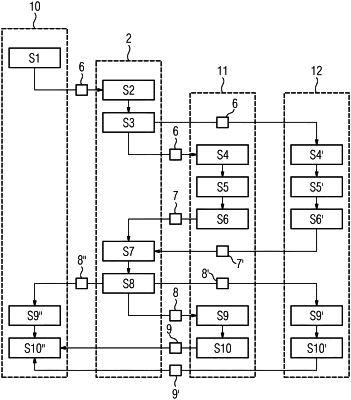| CPC H02J 13/00034 (2020.01) [G05B 13/042 (2013.01); H02J 13/00002 (2020.01)] | 19 Claims |

|
1. A method for controlling an exchange of energy in an energy system with multiple energy subsystems connected to one another for exchanging energy, the method comprising:
receiving first supply data at a control center from a first energy subsystem, wherein the first supply data represent respective remuneration conditions of the first energy subsystem for receiving and/or providing energy;
transmitting the first supply data to a second energy subsystem;
receiving second supply data at the control center, the second supply data responsive to the first supply data, from the second energy subsystem, wherein the second supply data represent respective remuneration conditions of the second energy subsystem for receiving and/or providing energy, and
controlling an energy exchange between the first energy subsystem and the second energy subsystem based on both the first supply data and the second supply data;
wherein the first supply data are determined by the first energy subsystem on the basis of a system state of the first energy subsystem and/or the second supply data are determined by the second energy subsystem on the basis of a system state of the second energy subsystem;
calculating a divergence between a previously forecast system state for a time interval and a system state determined later for the same time interval; and
at least one of the first supply data and the second supply data are determined so the divergence is minimized.
|